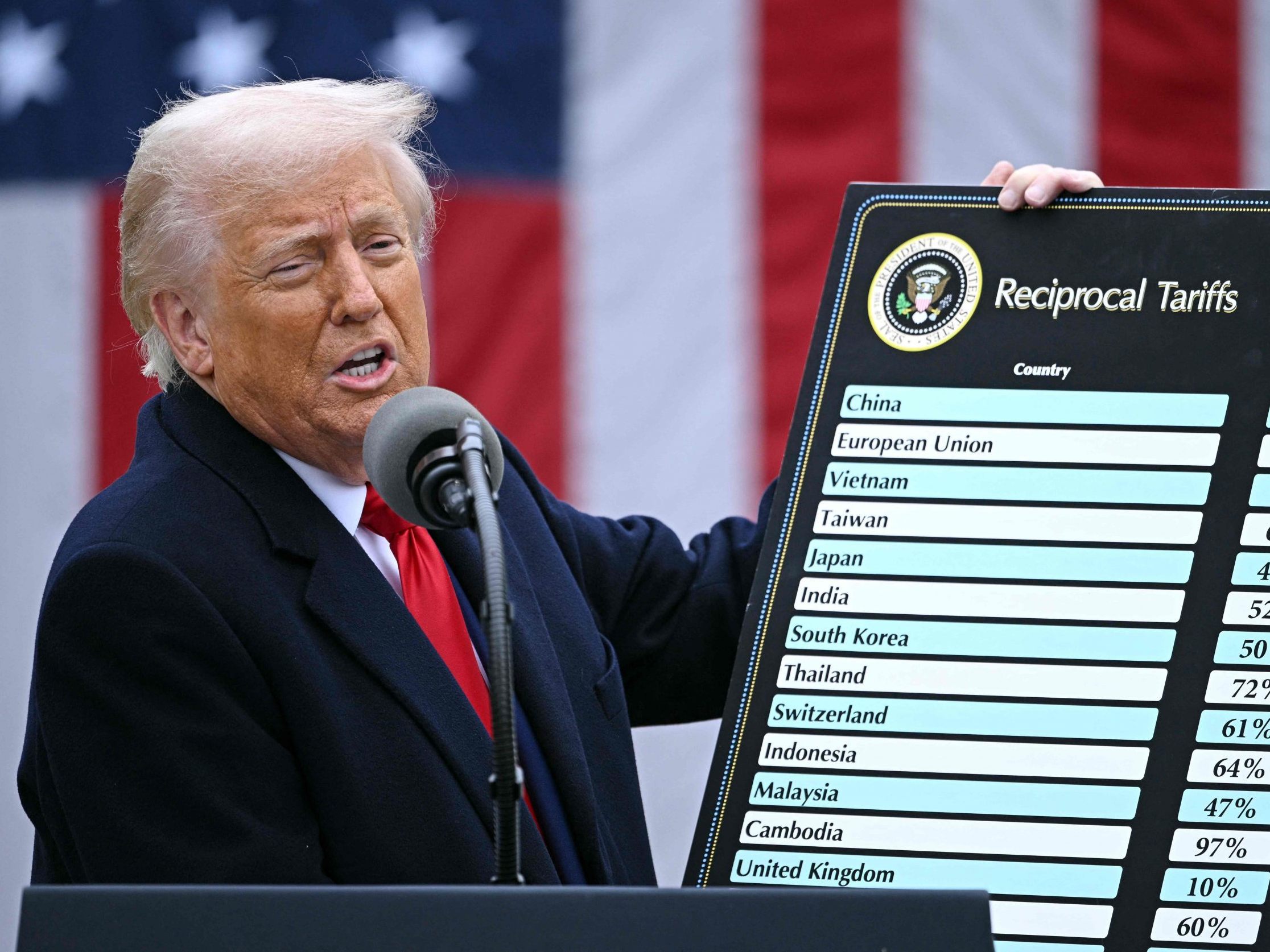Less Growth in Austria Due to Trump Tariffs

According to IHS model calculations, the new Trump tariffs will reduce the domestic GDP by 0.4 percent. A decline in economic performance could also increase the budget deficit. In addition to the US tariffs, the cooling of the global economy is also affecting Austria, according to Klaus Weyerstrass from the Institute for Advanced Studies (IHS). The International Monetary Fund predicted global growth of 3.3 percent for 2025 in January. Weyerstrass expects growth to be 0.2 to 0.3 percentage points lower this year due to the US tariffs and a 0.5 percentage point reduction in global growth in 2026.
Possible Flood of Goods from Asia Due to Trump Tariffs
In Europe, the IHS foreign trade economist expects "hardly" any effect on the inflation rate. However, there will be another negative economic impact for Europe due to the diversion of trade flows by US tariff policy, such as an additional flood of goods from Asia. For the USA, Weyerstrass expects a higher inflation rate and lower economic growth due to less consumption and uncertain consumers. The tariff package announced by US President Trump would raise the average US tariff rate to the highest level since the 1940s, the IHS foreign trade economist referred to data from the US Tax Foundation.
Wifo: Trump Tariffs Could Hit Domestic Economy Hard
The new tariff barrage from US President Donald Trump is likely to cost Austria's economic performance (GDP) 0.35 percentage points this year if there are no countermeasures, said Wifo economist Harald Oberhofer to journalists in the building of the Federation of Austrian Industries (IV). Exports could decrease by 1.4 percent. The US step is expected to come on April 15. A total effect can only be seen after three to five years. The calculation models of economic researchers offer uncertainties, according to Oberhofer. There are also uncertainties due to the many individual measures against individual countries, such as how exchange rates will develop.
USA Facing Inflation Peak and Export Slump Due to Trump Tariffs
The USA is likely to move towards an inflation peak. In addition, the world's largest economy is threatened with an export slump of almost a quarter (24 percent) this year. Oberhofer explained that Trump, by solely considering goods in the bothersome high trade deficits of the USA with many countries around the world, is only spreading "half the truth." Because in (digital) services, the United States usually has large trade balance surpluses.
When considering both together, the entire trade deficit of the USA with Europe is "only" 48 billion dollars or 3 percent of the total trade volume. Trump spoke on Wednesday evening (CEST) of 1.2 trillion dollars in international trade alone - and did not consider services, according to Oberhofer. Economy Minister Wolfgang Hattmannsdorfer (ÖVP) and IV President Georg Knill called for a confident joint approach by the EU and, if necessary, also by Great Britain after the meeting with representatives of the domestic export industry.
Trump Tariffs: Measures Against US Digital Corporations?
One must take the matter seriously, but not be paralyzed by fear, said Knill. There should be no mutual escalation, and a negotiated solution is the goal, but, according to new government politician Hattmannsdorfer: "As the largest internal market on this earth, we must not be afraid of Trump, of bizarre political models." To "force Trump to the table," any countermeasures must target where it politically hurts Trump. These are goods from Republican states, "friends of Trump," and tech companies. For such a program, which is already being coordinated, Hattmannsdorfer wants to advocate at the Council of Trade Ministers in Luxembourg on Monday. How to proceed with the tech companies is still open. One could perhaps continue working on the - albeit failed - OECD plans for a digital tax. A digital permanent establishment tax could also become a topic. One must think "out of the box" and not proceed according to the eye-for-an-eye principle.
Europe must further develop the internal market and enter into new alliances, reaffirmed Siemens Austria CEO and IV Vice President Patricia Neumann, echoing similar statements from Knill and Hattmannsdorfer. For Knill, among many other possibilities, this could be the conclusion of the Mercosur agreement. The ideal vision of the IV would be for the USA and the EU to move towards free trade. However, this currently does not seem very realistic. Why all this, what is the purpose, asked the media? Trump apparently does not want to give up the US advantage with the tech companies - here the USA is the best in the world - but wants to take away others' advantages in industrial production. "Maybe he does not want to accept that we might be better in industrial production and therefore does not accept the trade deficit there," speculated Oberhofer.
Trump Tariffs: wiiw Expects Deepening of the Recession
From the perspective of the Vienna Institute for International Economic Studies (wiiw), the tightening of US tariff policy will also hit the Austrian economy hard. "It is to be expected that the recession will deepen," said wiiw trade economist Robert Stehrer in an interview with APA. With tariffs of 20 percent, EU exports to the USA would decrease, which would also affect Austrian exporters. "This is another blow to the economy amidst negative growth."
Currently, according to Stehrer, EU exports to the USA account for around 7 percent of total European exports. For Austrian producers, the question arises whether they can find other markets for their products. However, the US measures are unlikely to have a negative impact on inflation in the European Union. "If attempts are made to sell products more intensively in Europe because of the tariffs, this could even have a deflationary effect," said the scientific director of the wiiw.
(APA/Red)
This article has been automatically translated, read the original article here.





